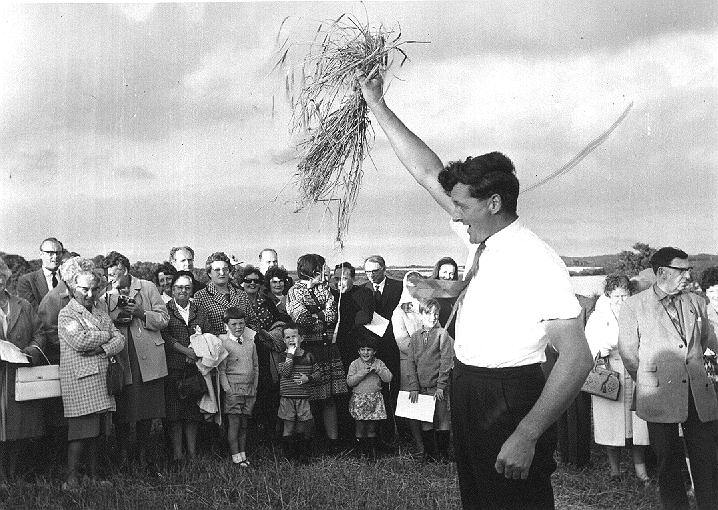|
|
| home | exhibitions | interviews | features | profiles | webprojects | archive |
|
Crying the Neck Mrs Eliza Bray Originally written in the form of a letter to Robert Southey in 1836
One evening, about the end of harvest, I was riding out on my pony, attended by a servant who was born and bred a Devonian. We were passing near a field on the borders of Dartmoor, where the reapers were assembled. In a moment the pony started nearly from one side of the way to the other, so sudden came a shout from the field, which gave him this alarm. On my stopping to ask my servant what all that noise was about, he seemed surprised by the question, and said “It was only the people making their games as they always did, to the spirit of the harvest.” Such a reply was quite sufficient to duce me to stop immediately; as I felt certain here was to be observed some curious vestige of a most ancient superstition; and I soon gained all the information I could wish to obtain upon the subject. The offering to the spirit of the harvest is thus made. When the reaping is finished, toward
evening the labourers select some of the best ears of corn from the
sheaves; these they tie together, and it is called the nack. Sometimes,
as it was when I witnessed the custom, this nack is decorated with
flowers, twisted in with the reed, which gives it a gay and fantastic
appearance. The reapers then proceed to a high place (such, in fact, was
the field on the side of a steep hill where I saw them) and there they
go, to use their own words, to “holla the nack.” The man who bears this
offering stands in the midst, elevates it, whilst all the other
labourers form them selves into a circle about him; each holds aloft his
hook, and in a moment they all shout, as loud as they possibly can,
these words, which I spell as I heard them pronounced, and I presume
they are not to be found in any written record. “Arnack, arnack, arnack,
wehaven ,wehaven ,wehaven? — This is repeated three several times; and
the firkin is handed round between each shout, by way, I conclude, of
libation. When the weather is fine, different parties of reapers, each
stationed on some height, may be heard for miles round, shouting, as it
were, in answer to each other.
'Crying the Neck' is a harvest tradition unique to Cornwall and Devon, that was revived by the Old Cornwall Societies in 1926. The earliest account is given in the second edition of William Hone's Every-day Book (1826), and is again from Devon. Photo is of the ceremony in Cury, 1967 (courtesy helstonhistory.co.uk). 24.1.22 |
|
|

